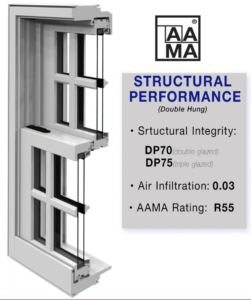Why do my windows have fog on them?
Fog on Windows Condensation and Excess Humidity: This is a Common Problem in Homes
Fog on Windows Condensation and excess humidity are common problems that many homeowners face. They can lead to issues such as mold growth, peeling wallpaper, and damaged furniture. Understanding the causes of condensation and excess humidity and how energy-efficient windows can help alleviate these issues can improve your indoor air quality and the health of your home.
The Causes of Condensation and Excess Humidity
Condensation and foggy windows occurs when warm, moist air comes into contact with a cool surface, such as a window or mirror. This causes the water vapor in the air to condense into liquid droplets, which can accumulate on the surface of the window. This process can occur in any area of the home where there is a temperature difference between indoor and outdoor air or 2 different types of surfaces. Smooth slick surfaces like glass are the places people normally see condensation.
Excess humidity can be caused by a variety of factors, including poor ventilation along with insufficient insulation in attic space, water leaks, and household activities such as showering, cooking, and even breathing. When humidity levels are high, it can lead to the growth of mold and mildew and which can be harmful to your health.
How Energy-Efficient Windows Help Alleviate Condensation and Excess Humidity
When shopping for Replacement windows:
Remember 2 things. The higher the “R-Value” the higher the “Resistance” is and that’s good. Also, the lower the “U-Value” the “lower thermal transmittance”, the better. This of course is when related to products for your home.
What Does R-Value, how is it related to Condensation on Windows?
The R-value is a measure of a material’s thermal resistance, or its ability to resist the flow of heat. It represents the ratio of the temperature difference across a material to the heat flow through the material.
In other words, the R-value indicates how well a material insulates against heat loss, and it is expressed in units of square meters Kelvin per watt (m²K/W). The higher the R-value, the better the material is at insulating against heat loss, and the more energy-efficient it is.
R-values are commonly used to rate the energy efficiency of insulation materials, such as fiberglass, cellulose, and spray foam. By selecting materials with higher R-values, homeowners and builders can reduce energy consumption, lower heating and cooling costs, and improve overall comfort in buildings.
What is U-Value and how is it related to Condensation?
The U-value, also known as the thermal transmittance, is a measurement of how well a material, such as a window or a wall, conducts heat. This is how it is related to foggy windows. It represents the rate at which heat flows through a material per unit of surface area and per unit of temperature difference between the two sides of the material.
In other words, the U-value indicates the amount of heat that passes through a specific material, and it is expressed in units of watts per square meter per Kelvin (W/m²K). The lower the U-value, the better the material is at insulating against heat loss, and the more energy-efficient it is.
U-values are commonly used to rate the energy efficiency of windows, doors, and other building components. By selecting materials with lower U-values, homeowners and builders can reduce energy consumption, lower heating and cooling costs, and improve overall comfort in buildings.
Solutions for Foggy Windows
Energy-efficient windows are designed to reduce heat transfer between the indoors and outdoors. This means that they can help to maintain a consistent indoor temperature, which can help to reduce the occurrence of condensation on windows. Additionally, some energy-efficient windows are coated with a special film that can help to reduce the amount of heat and moisture that passes through the glass. The more energy efficient the glass unit is the less heat transfer happens from inside to outside. This helps save energy in both Winter and Summer and helps eliminate foggy windows.
When combined with proper ventilation and moisture control, energy-efficient windows can help to reduce excess humidity in the home thus eliminating Fog on Windows or Condensation. By keeping the indoor temperature consistent, homeowners can reduce the occurrence of moisture buildup or condensation on windows and other surfaces. If your home is equipped with a humidifier working with your furnace, make sure it also has a Humidistat (device used to raise and lower and monitor the humidity). This can improve indoor air quality, help to prevent mold and mildew growth, and protect the health of your home and its occupants.
In conclusion, condensation and excess humidity are common problems that can lead to significant damage in the home. Energy-efficient windows can help to alleviate these issues by reducing heat transfer and maintaining a consistent indoor temperature. By addressing these problems, homeowners can improve their indoor air quality, protect their homes, and enjoy a healthier living environment.

















